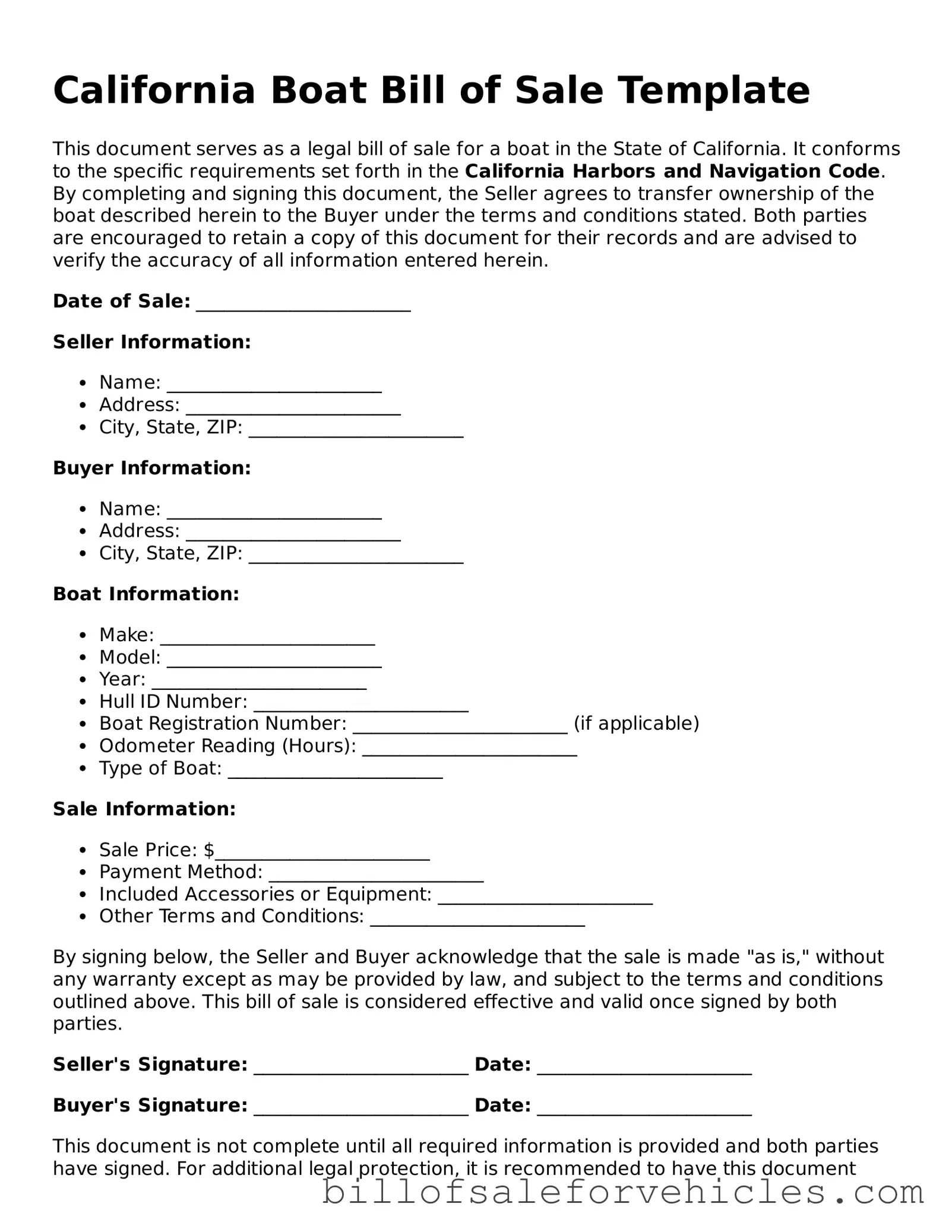What is a California Boat Bill of Sale form?
A California Boat Bill of Sale form is a document that records the sale and transfer of a boat from a seller to a buyer in the State of California. It serves as proof of purchase and confirms the change of ownership. This form typically includes important details about the transaction, such as the buyer's and seller's names and addresses, a description of the boat, the sale price, and the date of sale.
Do I need a Boat Bill of Sale to register a boat in California?
Yes, when you're registering a boat in California, a Boat Bill of Sale is often required as part of the documentation needed to legally transfer the boat into your name. It confirms the details of the transaction and may be needed to calculate sales tax or other fees associated with the registration.
What information should be included in a California Boat Bill of Sale?
A California Boat Bill of Sale should include the names and addresses of both the buyer and seller, a detailed description of the boat (including make, model, year, and hull identification number), the sale price, the date of sale, and any warranty or "as-is" status. It's also important to include both parties' signatures to validate the document.
Is notarization required for a Boat Bill of Sale in California?
Notarization is not typically required for a Boat Bill of Sale in California. However, having the document notarized can add an extra layer of authenticity and may help resolve any potential disputes about the validity of the signatures or the sale itself.
How does a Boat Bill of Sale protect the buyer and seller?
A Boat Bill of Sale protects the buyer by providing legal proof of purchase and showing that ownership has been transferred to their name. For the seller, it documents the release of ownership and can help protect against potential future liability related to the boat. It serves as a record that the transaction occurred, detailing the condition of the boat at the time of sale, and the agreed-upon terms.
Can I create a Boat Bill of Sale myself?
Yes, you can create a Boat Bill of Sale yourself. While there are templates available online, it's important to ensure that any document you prepare complies with California state requirements. Be sure to include all necessary details and have both parties review and sign the document.
What happens if I lose my Boat Bill of Sale?
If you lose your Boat Bill of Sale, it's recommended to contact the other party involved in the transaction and request a copy. If that's not possible, and if the boat has already been registered, you may contact the California Department of Motor Vehicles (DMV) or the relevant local authority for assistance, as they might have a copy or record of the transaction.
Do I need to file my Boat Bill of Sale with any California state agency?
While the Boat Bill of Sale itself is not typically filed with a state agency, it is an important document needed for the registration process. When registering your boat, you will need to present the Boat Bill of Sale among other required documents to the California Department of Motor Vehicles (DMV) or the agency that handles boat registrations.
Can a Boat Bill of Sale be used for both new and used boats?
Absolutely! A Boat Bill of Sale can be used for the sale of both new and used boats. It serves the same purpose in both cases: to document the sale and transfer of ownership from the seller to the buyer.
